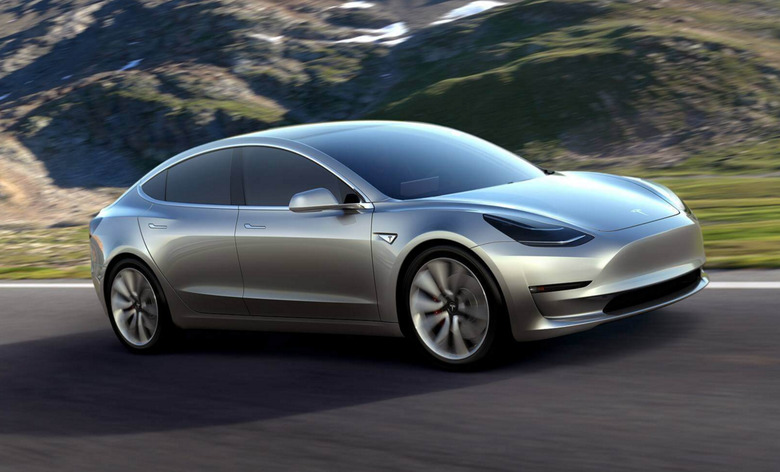Recent Tesla Hire Might Have Spoiled One Of The Model 3's Biggest Surprises
BGR has learned that Tesla recently hired Milan Kovac, the former principal engineer over at Skully Systems. In case you're unfamiliar, Skully is the company behind a futuristic motorcycle helmet with a built-in heads up display (HUD). While Tesla hires talented engineers all the time, Kovac's background is particularly interesting given the recent unveiling of the Model 3 and its curiously sparse dashboard.
As we've detailed previously, the interior design of the Model 3 raised more than a few eyebrows due to its lack of a traditional instrument cluster. As the photo below demonstrates, the only place where a driver can ascertain his or her speed and other pertinent driving information is from the 15-inch video display on the center console. Notably, a Tesla rep at the Model 3 unveiling confirmed that the final production model will in fact lack a traditional instrument cluster.
DON'T MISS: HTC 10 review: An exciting new flagship phone that's better in every way
Subsequently, Tesla CEO Elon Musk alleviated concerns about the peculiar design choice via Twitter, noting that everything will make more sense soon.
@BValvsRacing It will make sense after part 2 of the Model 3 unveil
— Elon Musk (@elonmusk) April 3, 2016
Consequently, many have been quick to assume that the final production version of the Model 3 will incorporate a HUD. And that's where Kovac's expertise may come into play.
While at Skully, Kovac helped develop the Skully AR-1, the first consumer-oriented intelligent HUD motorcycle helmet. The helmet, which we covered back when it was still an Indiegogo project getting off the ground, utilizes a transparent heads up display to present riders with pertinent and glanceable information such as visual navigation and speed.
"The SKULLY AR-1 brings fighter pilot Heads-Up Display technology to motorcycle helmets," the company boasts on its website.
A short promotional video of the helmet and its underlying technology can be seen below.
Now according to Kovac's LinkedIn profile, he's currently working on Autopilot technology at Tesla. This makes sense given that without the digital dash Tesla implemented with the Model S, a Model 3 with Autopilot enabled will likely have to display pertinent Autopilot-related information on a HUD.
It's also worth noting that Kovac a few years back spent some time working at Softkinetic, a Belgium-based company that prides itself as being the "world's leading provider of 3D vision and gesture recognition solution." Interestingly, Softkinetic's gesture control technology is already being used in the BMW 2015 Series 7.
Is is it possible that this represents sneak peek at some of the surprises that the Model 3 might have in store? It's hard to say, but it's clear that Tesla has brought on board a talented engineer who will more than likely be doing some interesting work in sprucing up the Model 3 driving experience.
Two additional points of interest are worth noting.
First, Elon Musk previously stated that the Model 3 steering wheel will look like a spaceship and will have no shortage of controls. That being the case, imagine a fully decked out steering wheel capable of controlling a gigantic HUD on the windshield.
@HBL_Cosmin Wait until you see the real steering controls and system for the 3. It feels like a spaceship.
— Elon Musk (@elonmusk) April 3, 2016
Second, Tesla recently hired the man responsible for the interior design of Porsche's Mission E. Of particular interest is that the Mission E dashboard featured a holographic display along with a number of other futuristic controls.
Taking a step back and looking at all these developments together, it's clear that the final production version of the Model 3 will have an incredibly futuristic interior and may very well send reservations into the stratosphere.
